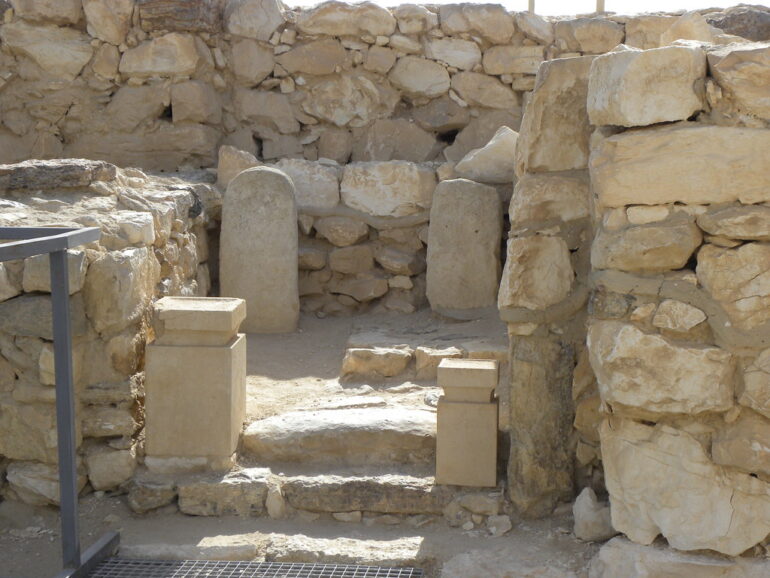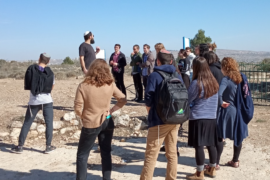According to a new study by Tel Aviv University’s Institute of Archaeology, the ancient Hebrews might have used cannabis in their worship at Jerusalem’s first Holy Temple.
The discovery was made at the remains of a shrine in Tel Arad in the Negev Desert, which had been part of a mountain fortress that guarded the southern border of the Judean kingdom from the ninth century BCE until the kingdom’s destruction at the hands of the Babylonian Empire in 586 BCE.
The fortress was first discovered by archaeologists in the 1960s. The layout of the shrine was discovered to be a miniature version of King Shlomo’s Temple in Jerusalem. Pottery shards and Hebrew inscriptions at the site further confirmed that the fortress was a military outpost of the Judean kingdom.
Two limestone altars were found inside the shrine where the remains of burnt offerings were well-preserved by the desert climate. When first discovered in the 60s, the remains couldn’t be properly analyzed to determine their composition.
The shrine appears to have been in use for roughly 50 years before it was decommissioned and the altars buried in 715 BCE. Because the shrine was decommissioned while the military fortress remained in use, it’s assumed that the shrine was targeted by King Ḥezkiyahu’s order to destroy all Judean altars outside the Jerusalem Temple.
Eran Arie, curator for archaeology of the Israel Museum’s Iron Age and Persian Period, where the artifacts are currently being held, recently initiated a project to utilize modern techniques to analyze the remains, together with chemist Dvori Namdar, who is also an archaeologist at the Volcani agricultural research center.
After analyzing the larger of the two altars, which stood 52 centimeters high, the team found remains of frankincense, an aromatic resin used in incense and perfumes described in ancient Hebrew texts as one of the substances burned with the grain offerings. This is the first report of frankincense being discovered at any archaeological site in the levant.
The true surprise, however, came when the smaller altar was analyzed. This altar, standing at 40 centimeters high, was found to be covered in teterahydrocannabinol (THC), cannabidiol (CBD) and cannabinol, all of which are found in cannabis.
The research team found that the frankincense had been burned together with animal fat while the cannabis had been burned with animal dung. The fat would have helped raise the temperature of the frankincense to 260 degrees Celsius, the temperature necessary to release the resin’s pleasant aroma.
The animal dung, however, would have been used to burn the cannabis at 150 degrees Celsius, the maximum temperature at which the psychoactive compounds of the cannabis would take effect.
The researchers said that the use of animal dung to control the temperature of the cannabis suggests that the Judeans at Tel Arad were deliberately using the substance for its psychoactive effects. They also concluded that because cannabis was not grown in Eretz Yisrael during the Biblical period, the plant was likely imported at a high price.
The team suggested that the Davidic monarchy in Jerusalem would have likely had to have sanctioned the use and importation of the substance, meaning that the use of cannabis was likely not confined to the Tel Arad shine but most likely widespread in the Judean kingdom. The researchers further suggested that cannabis might have been burned by the Kohanim (priests) in the Jerusalem Temple.





